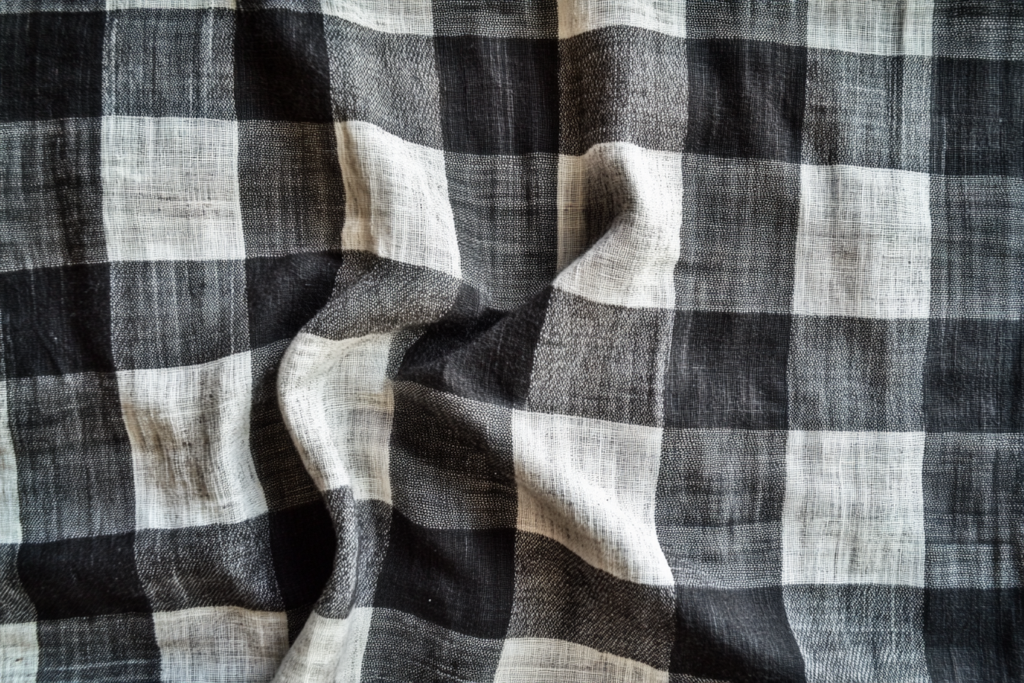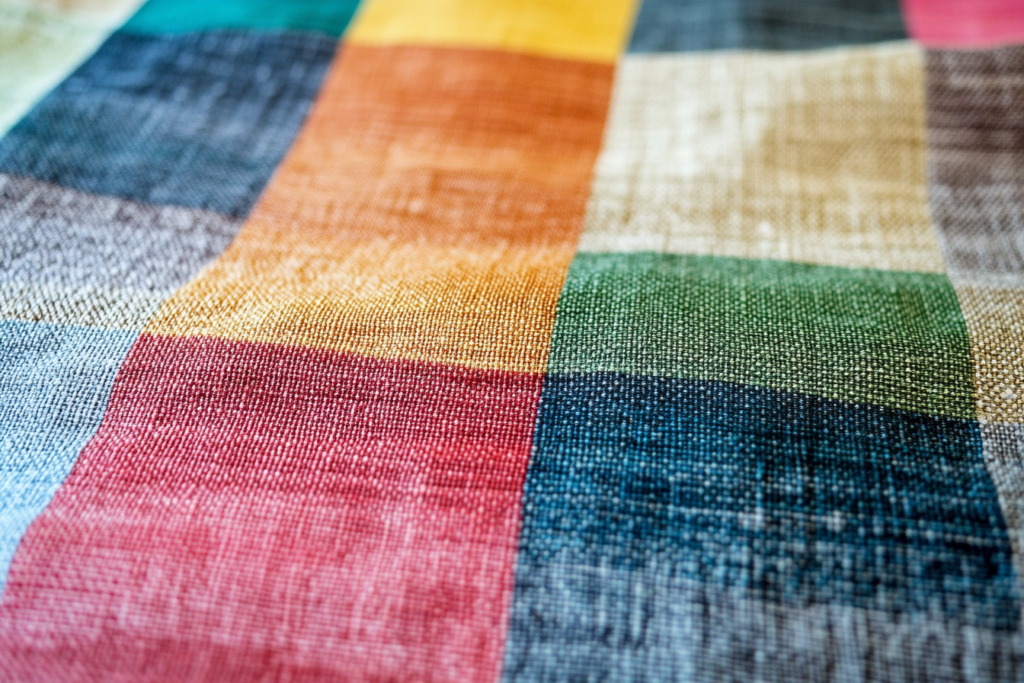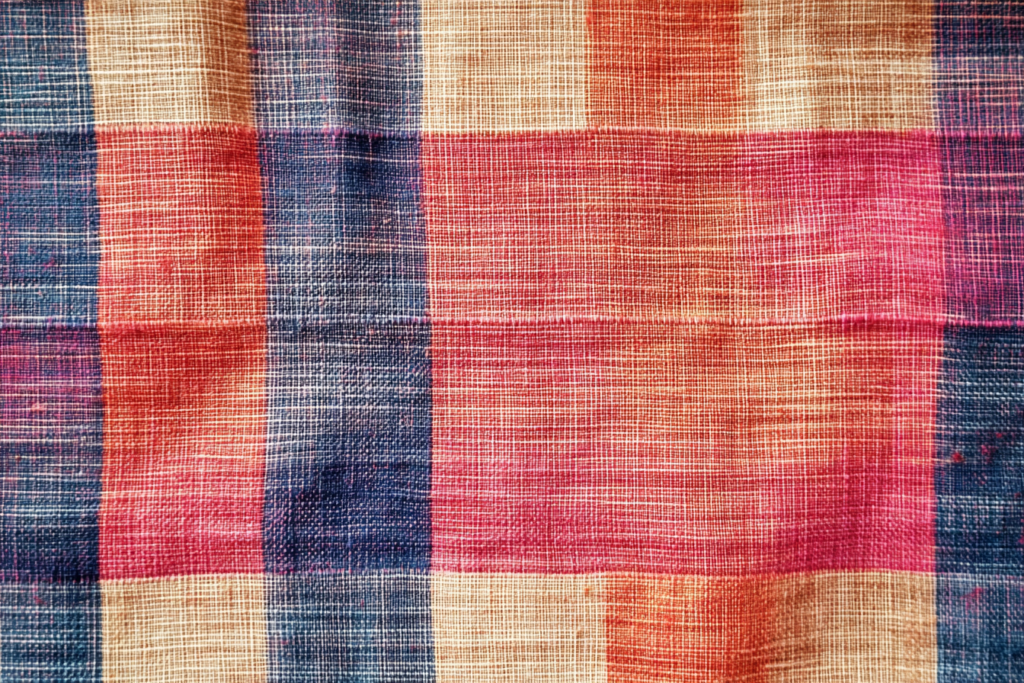Handloom: The Art of Hand-Woven Checkered Pattern Fabric
Meta Description: Handloom fabric is a hand-woven textile, often featuring checkered patterns. Discover its history, craftsmanship, and uses in modern fashion.
What is Handloom Fabric?
Handloom fabric is a hand-woven textile created using traditional wooden looms, without the use of automated machinery. It is often characterized by checkered patterns, which are achieved through the interweaving of different colored yarns.
This fabric is widely appreciated for its unique texture, breathability, and sustainable production process. Handloom textiles are commonly made from natural fibers like cotton, silk, wool, or linen, making them an eco-friendly and culturally rich alternative to mass-produced fabrics.


Key Features of Handloom Fabric
✔ Hand-Woven Craftsmanship – Each piece is individually woven, ensuring unique patterns and textures.
✔ Checkered & Geometric Patterns – Traditional designs featuring small or large checks, stripes, or intricate motifs.
✔ Soft & Breathable – Ideal for casual wear, ethnic garments, and home textiles.
✔ Eco-Friendly Production – No electricity is used, making it a sustainable textile choice.
✔ Durable & Comfortable – The fabric’s natural weave enhances longevity and wearability.
The History and Significance of Handloom Weaving
Handloom weaving is one of the oldest textile traditions, dating back thousands of years. It has been an integral part of many cultures worldwide, including:
- India – Known for Khadi, Ikat, and Madras check handloom fabrics.
- Scotland – Famous for handwoven tartan fabrics with distinctive checkered patterns.
- Africa & South America – Traditional hand-dyed and woven textiles with geometric checkered designs.
Handloom weaving supports rural artisans and fair-trade industries, preserving traditional craftsmanship while promoting sustainable fashion.
Types of Handloom Checkered Fabrics
- Madras Checks (India) – Vibrant, lightweight cotton fabric featuring bold, multicolored checks.
- Gingham Handloom – A simple two-color checkered fabric, popular in shirts and dresses.
- Tartan Plaid (Scotland) – A woven pattern of crossed horizontal and vertical stripes.
- Ikat Checkered Handloom – A dyed and woven checkered design with slightly blurred edges.
- Block-Woven Handloom – Larger, more defined checkered designs woven with natural fibers.
Common Uses of Handloom Checkered Fabric
✔ Clothing & Fashion – Used in shirts, skirts, sarees, kurtas, and dresses.
✔ Home Furnishings – Popular for curtains, tablecloths, cushion covers, and rugs.
✔ Accessories – Seen in handwoven scarves, shawls, and bags.
✔ Traditional & Festival Wear – Incorporated into cultural and ceremonial garments.
Handloom vs. Power Loom: What’s the Difference?
| Feature | Handloom Fabric | Power Loom Fabric |
|---|---|---|
| Production | Woven by hand | Machine-woven |
| Uniqueness | Each piece has slight variations | Uniform and mass-produced |
| Texture & Durability | Soft, breathable, and long-lasting | Can be synthetic and less breathable |
| Sustainability | Eco-friendly, minimal energy use | Higher carbon footprint |
| Price | Slightly higher due to craftsmanship | More affordable for mass production |
Handloom textiles are favored for their authenticity and sustainability, while power loom fabrics are used for mass production and commercial clothing.
Why Choose Handloom Fabric?
✔ Ethical & Sustainable – Supports artisans and reduces environmental impact.
✔ Unique & Artistic – Each weave tells a story of traditional craftsmanship.
✔ Comfortable & Breathable – Perfect for all-season wear.
✔ Timeless & Versatile – Works for both casual and formal fashion.
Conclusion: Handloom Fabric – A Timeless Tradition in Modern Fashion
Handloom fabric, especially in checkered patterns, remains a symbol of cultural heritage, craftsmanship, and sustainability. Whether used in fashion, home textiles, or accessories, handloom fabrics offer aesthetic appeal and ethical value, making them a smart and stylish choice.
By choosing handloom, you support traditional weavers and help preserve a centuries-old art form while embracing quality and sustainability.



